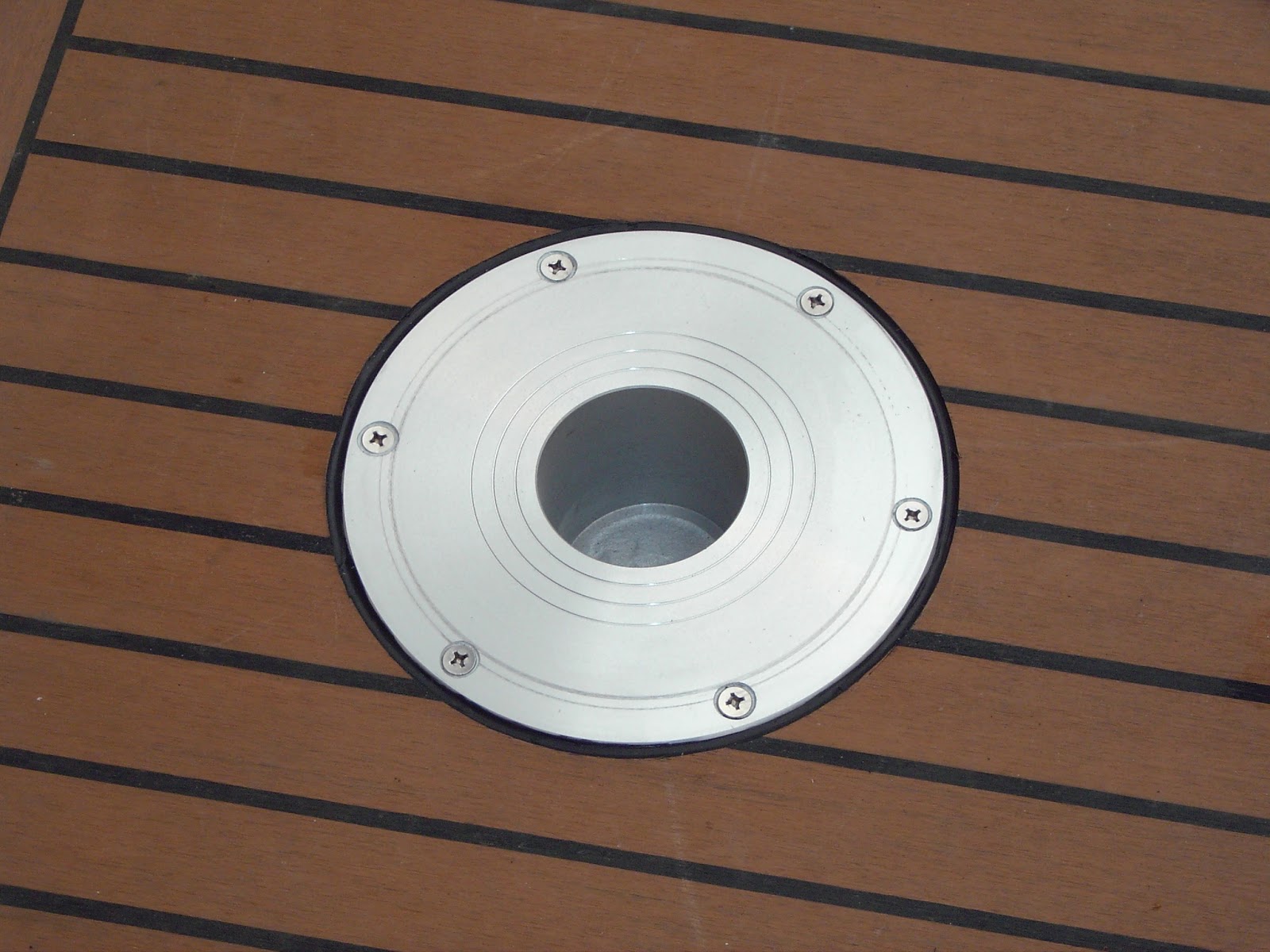As many of you are aware, when I purchased this boat, I did not get the engines, generator, or engine room hatch. So, I worked with a company out of Connecticut, Boatworks Inc., to fabricate a replacement hatch. We took the existing design, and updated the construction methods to take advantage of some of the advancements in resin infusion technology. The resulting hatch is not only a bit lighter than the original, it is considerably stronger. It actually has two cores, separated by a fiberglass skin, in addition to the outer skins. However, no provision was made for the cockpit table base at the time of manufacture, so today's post will demonstrate how I solved that problem.
Sea ray's original cockpit table and base utilized a roughly 2" diameter column and associated base. Many of you are likely familiar with how this base/column allow the table to wobble around a bit during use. Since I have the ability to specify all the components at this point, I decided to upgrade to a 3" column and larger diameter base, to help stabilize the table and make it more useful. This post will detail the base install.
The first step is to locate the exact placement for the base. In this case, I wanted the table to be equidistant from the seating areas, so everyone has an equal reach to the table. Once that position was determined, I marked the location, and drew a circle on the teak decking that was about 3/8" larger than the base. Using a circle cutter with a sharp blade, I cut out the teak decking, exposing the gelcoat underneath. Next, using a hole saw, I cut a hole just large enough to receive the base. Then I marked the holes for the screws, and drilled these locations out to a 1/2" diameter - far larger than required. Using the same methods as previously described for the bow hardware rebedding, I then coated the exposed surfaces in the large hole with several layers of epoxy resin, and filled the 6 drilled holes with thickened epoxy. Once this had cured for a couple days, I came back and drilled the epoxy liners for the screws, resulting in what you see below:
Now, before installing the base, I had to prepare the proper sealants. In this case, I started with a bead of butyl rubber, rolled into a 1/4" diameter, and placed it around the large hole. This material never hardens or cures, and will act as a last defense in case the bedding compound (Lifecaulk) ever fails.
I then placed a sizable bead of Lifecaulk on the base, just inside the screw holes, and around the entire circumference of the base. Each chamfered screw hole was also sealed, the base was dropped into place, and the screws were tightened. Excess sealant was wiped up carefully. Finally, after I allowed another couple days for the Lifecaulk to cure, I taped carefully around the base, and applied a black sealant in the gap formed between the teak decking and the base, as shown below:
The final install looks like factory original, is completely sealed from water intrusion via 3 distinct sealant barriers, and is a definite upgrade in terms of rigidity. In part II, I'll post some pics of the column and finished table.





No comments:
Post a Comment